Substrate is essential for all reptile cages. It’s a fancy word for bedding.
What you need to know when it comes to blue tongue skinks, is that they love to dig and burrow.
Therefore you want to choose a soft and loose substrate that is deep enough to encourage natural behavior.
Of course, the substrate you need is determined by the skink you have.
Each blue tongue skink species have different humidity requirements, which play a role in the substrate you should use.
Based on the humidity requirement, we can consider two categories of blue tongue skink:
- Australian blue tongue skinks requires moderate humidity level. They are:
- Tanimbar blue tongue skink (Tiliqua scincoides chimaerea)
- Northern blue tongue skink (Tiliqua scincoides intermedia)
- Eastern blue tongue skink (Tiliqua scincoides scincoides)
- Western blue tongue skink (Tiliqua occipitalis)
- Central blue tongue skink (Tiliqua multifasciata)
- Blotched blue tongue skink (Tiliqua nigrolutea)
- Singleback (Tiliqua rugosa)
- Pygmy blue tongue skink (Tiliqua adelaidensis)
- Indonesian blue tonge skinks are species that need high humidity level. These include:
- Classic Indonesian blue tongue skinks (Tiliqua gigas gigas)
- Merauke blue tongue skink (Tiliqua gigas evanescens)
- Kei Island blue tongue skink (Tiliqua gigas keyensis)
- Irian Jaya blue tongue skink (Tiliqua sp.)
Blue Tongue Skink Substrate Thickness
When it comes to adding substrate to your blue tongue skink enclosure, you will want to bear in mind that your lizard is going to love to dig and burrow.
Therefore four to six inches of substrate is the right amount to encourage natural behaviors, such as digging and burrowing.
Best Substrates For Blue Tongue Skink
1. Exo Terra Coco Husk Substrate

This is a one hundred percent natural substrate that helps to increase humidity, while encouraging natural burrowing and digging.
This is ideal for Indonesian blue tongue skinks that require a very high humidity level.
The product comprises of compressed coconut husks. A natural ecological substrate that is safe for any digging and burrowing reptile.
Pros
- One hundred percent natural
- Increases humidity levels
- Encourage digging and burrowing
- Natural ecological substrates
- Easy to use
Cons
- Sharp pieces
- Green plastic pieces once prepared
2. Kaytee Aspen Substrate

The Kaytee Aspen Substrate is an all natural product made from Aspen shavings, which eliminates the risk of dust and debris, thereby reducing the risk of impaction.
This is suitable for Australian and Indonesian blue tongue skinks offering a soft and clean bedding that is easy to clean and maintain.
Pros
- Natural Aspen shavings
- No dust or debris
- Reduced risk of impaction
- Soft bedding
- Easy to clean
Cons
- Strong smell
- High risk of mites
3. Reptile Prime Coconut Fiber Substrate

This substrate is ideal for all blue tongue skinks offering a substrate suitable for dry and damp enclosures with excellent humidity capabilities.
This substrate is natural and absorbs odors and waste, making it quick and easy to clean.
This is a premium bedding with all dust and sand removed. It offers the reduced risk of fungus with improved humidity.
Pros
- Suitable for dry and damp enclosures
- Excellent humidity properties
- Natural product
- Excellent absorption of doors and waste
- Quick and easy to clean
- Dust and sand removed
Cons
- Turns soil and soggy when wet
- Thick and tends to compact
- Strong smelling
4. T-Rex Sani Chips Substrate

The T-Rex sani chips substrate is highly recommended for the Australian species of blue tongue skinks.
Sani chips are aspen wood that is light and easy to clean. Being very absorbent and dust free, it is a preferred substrate with blue tongue skink owners.
This substrate can be purchased in two sizes, ensuring your blue tongue skink needs are met with confidence.
Pros
- Made from Aspen wood
- Light and easy cleaning
- Absorbent
- Dust free
Cons
- Can be eaten when hunting for food
5. Zilla Aspen Substrate

This laboratory grade aspen chips is suitable for both Indonesian and Australian species of blue tongue skink.
These are heat treated and ultra absorbent with hypo allergenic properties. The chips are a great size to make cleaning quick and easy.
The substrate is one hundred percent natural and environmentally friendly.
Pros
- Laboratory grade aspen chips
- Heat treated
- Ultra absorbent
- Hypo allergenic
- Quick and easy cleaning
- One hundred percent natural
- Environmentally friendly
Cons
- Increased risk of mites
- Reptiles struggle to dig and burrow
- Risk of impaction
6. Zoo Med Forest Floor Substrate

This substrate is a cypress mulch suitable for all blue tongue skinks.
It provides a natural forest look while ensuring that moisture is retained to promote good humidity levels.
It allows your skink to dig and burrow, encouraging natural activities while living in captivity.
Pros
- Natural cypress mulch
- Natural forest look
- Good humidity
- Encourages digging and burrowing
Cons
- Reports of being infested with mites
7. Zoo Med Sphagnum Moss

Sphagnum moss is a popular substrate for use with blue tongue skinks as it encourages excellent humidity levels.
Being natural and environmentally friendly, the substrate offers excellent moisture holding properties and can hold moisture up to twenty times it’s weight.
It is mold resistant, looks natural, soft and can help make your reptile feel at home.
Pros
- Encourages high humidity
- Natural
- Environmentally friendly
- Moisture retention
- Mold resistant
- Soft
Cons
- Mites
- If not correctly prepared can result in impaction
8. Zoo Med Repti Bark Bedding

This is an all natural product that can provide you with up to one year of use. It is highly absorbent and offers excellent humidity.
It is made from fir bark, which enables it to distribute heat evenly, while allowing for natural burrowing and digging.
Simply soak in hot water every couple of months to enjoy fresh and clean bark.
Pros
- Natural Fir bark
- Can be used for up to one year
- Highly absorbent
- High humidity
- Even distribution of heat
- Natural digging and burrowing
Cons
- Reports of mites appearing after a few days
- Tends to splinter
9. Zoo Med Loose Coconut Fiber Substrate

Coconut fiber is a great substrate for Indonesian and Australian blue tongue skins.
It helps to create a natural habitat, with natural absorption, while breaking down waste and odors.
This is an eco earth loose fiber made from coconut husks.
Pros
- Natural coconut fibers
- Natural habitat
- Excellent absorption
- Break down odors and waste
Cons
- Increased risk of mites
- Very messy to work with
Bad Substrates For Blue Tongue Skink
There are numerous substrates which are not recommended for blue tongue skinks.
Ensure you are aware of the bad substrates to reduce the risk of impaction, respiratory issues and other health problems in the long run.
Alfalfa

Alfalfa is a substrate that is used in numerous reptile enclosures, but it’s not recommended for your skink.
This is a very heavy and dense substrate, making it difficult to dig and burrow.
When wet it breaks down, so it cannot provide the high humidity a skink needs to thrive in captivity.
Calcium Sand
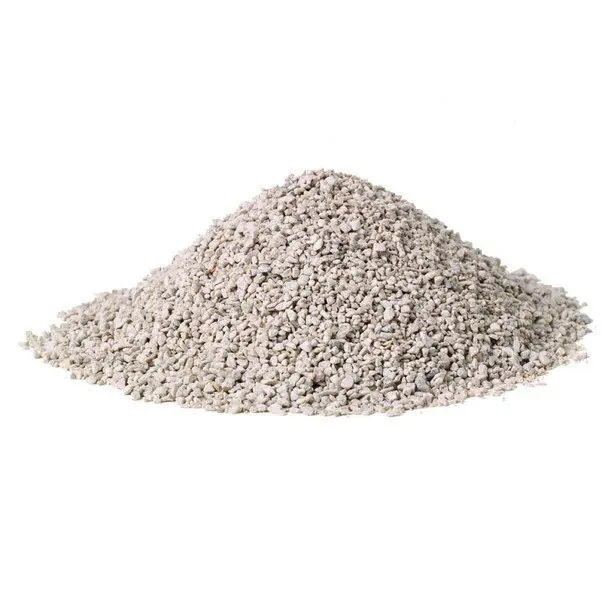
Calcium sand is another of the substrates often used by reptile owners.
The problem with this substrate is that your skink can digest the sand, which can result in renal failure, kidney issues, muscle weakness and more.
Clay Litter

Clay litter is not recommended for any blue tongue skinks.
The clay has a tendency to clump, which can result in impaction if your skink accidentally eats it.
Cat Litter
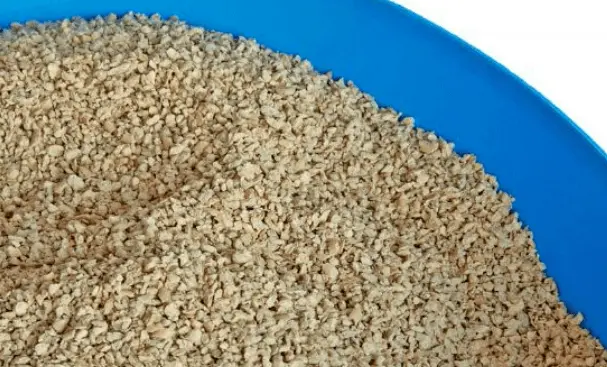
Cat litter may seem an obvious substrate for blue tongue skinks, offering a fresh smell and limiting odors, but it is exceptionally dangerous
It can dehydrate your skink, it can be toxic and comes with severe impaction risks.
Gravel
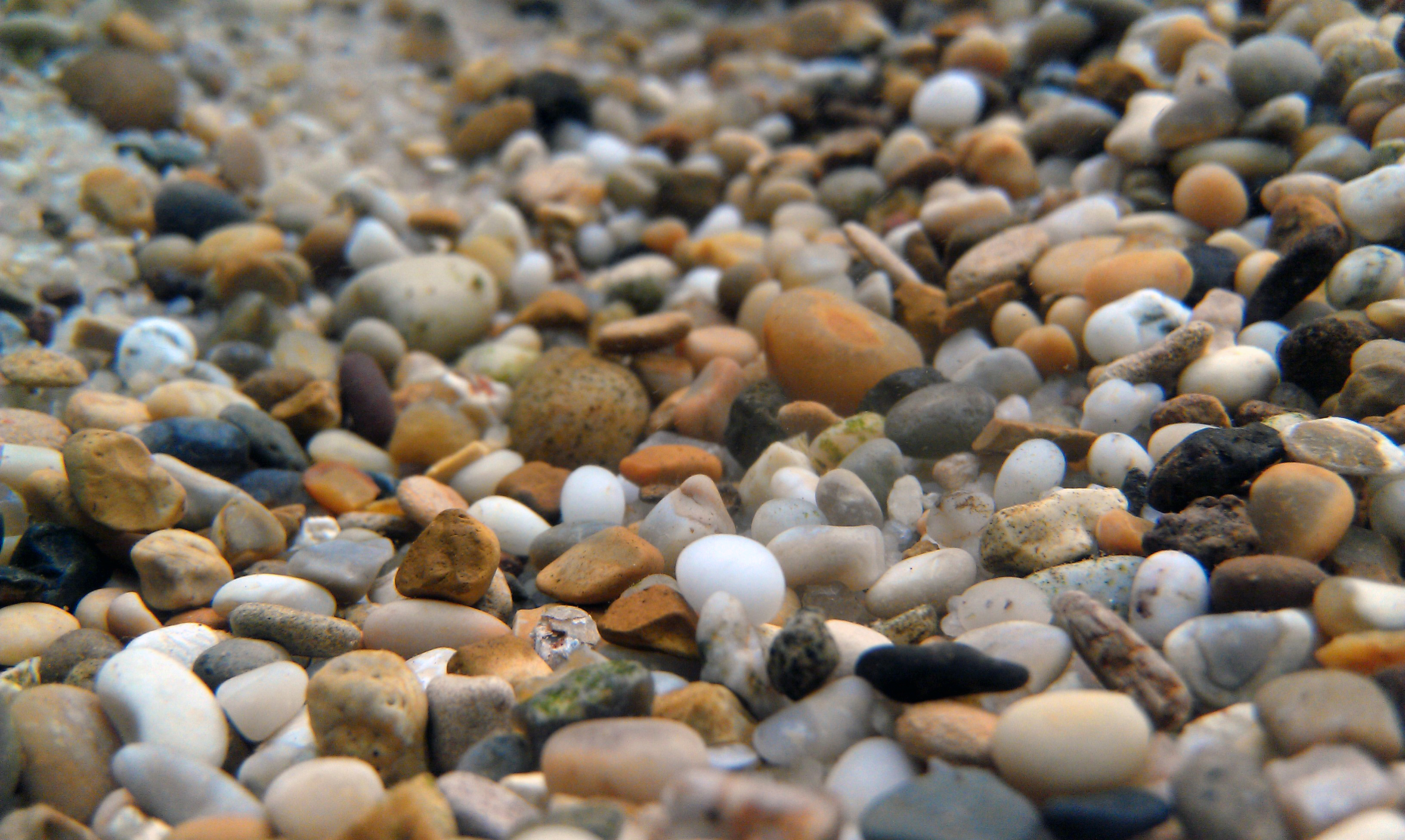
Gravel doesn’t provide a soft substrate for digging and burrowing.
It also poses a risk to your reptile, should they eat a small rock by mistake.
Reptile Carpet
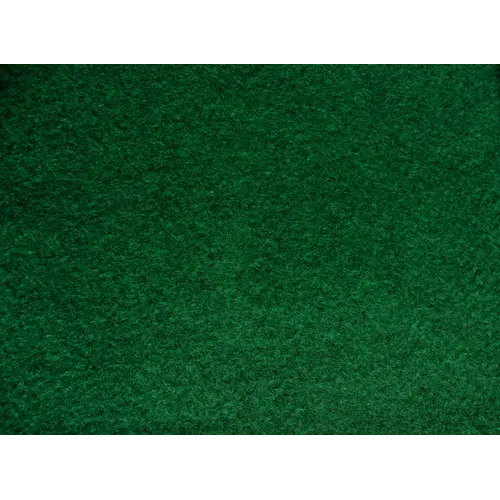
Reptile carpets are sold around the world to use with reptiles of all types.
The problem is that reptile carpet does not accommodate reptiles that love to burrow and dig In addition to their claws getting stuck in the carpet, you may find your skink under the carpet more than on top.
This can result in quite a few rescue missions on your side.
Walnut Litter
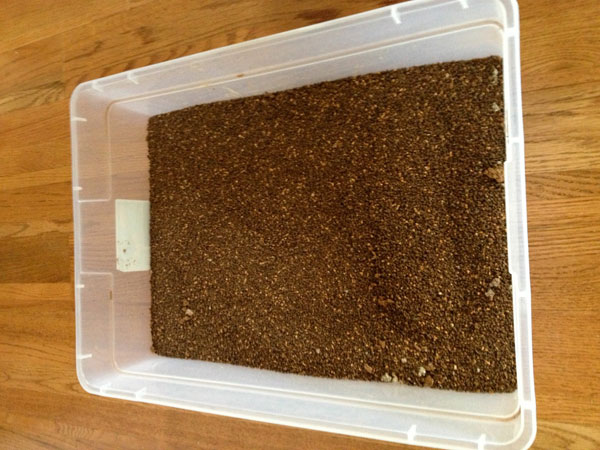
Walnut litter is another of the substrates that should never be used with blue tongue skinks due to it causing impaction.
What Substrate Should I Use With Which Species?
Indonesian Blue Tongue Skink
The Indonesian blue tongue skink species require very high humidity levels.
Therefore sphagnum moss, eco earth and coconut fibers (Zoo Med Loose Coconut Fiber Substrate or Reptile Prime Coconut Fiber Substrate) are the best choice to retain humidity while providing a soft substrate to encourage digging and burrowing.
Australian Blue Tongue Skink
The Australian blue tongue skinks require moderate humidity.
Therefore you want to pay close attention to the substrates you use to maintain a comfortable humidity level that will allow your skink to thrive.
Cypress mulch, coconut fiber (Zoo Med Loose Coconut Fiber Substrate or Reptile Prime Coconut Fiber Substrate), aspen (Kaytee Aspen Substrate or Zilla Aspen Substrate) and repti bark are great choices to help your skink stay happy and healthy.
How to Sterilize The Substrate
Heat is the best way to sterilize anything. Heat is essential to ensure that you remove any dangerous bacteria, mold and fungus.
Wet Substrates
The best way to sterilize wet substrate is with heat. Microwaves can be used on wet substrate only.
Microwaves tend to heat the liquid and therefore dry substrates will not heat enough to kill any dangerous toxins and pathogens.
Wet materials should be heated at 121ºC for at least 15 minutes to have a sterilizing effect. This can kill all mites, viruses and fungi.
15 minutes in the microwave will ensure that the substrate is piping hot, ensuring mites die faster.
Dry Substrates
Sterilizing your dry substrate will need to be done in the oven, as we have already mentioned that the microwave heats liquid.
An oven on 160ºC for up to forty five minutes will offer excellent sterilization results on dry substrates.
Dry substrates may be a little difficult when it comes to sterilizing.
It’s not uncommon for you to still be able to touch the substrates after it has been heated, this is due to the some of these being excellent heat insulators.
It’s recommended to use a thermometer to ensure the dry substrate reaches the required temperature.
Can I Mix Different Substrates?
Yes you can play around with substrates to find the perfect match for your blue tongue skink based on their humidity, digging and burrowing needs.
Cypress mulch is often mixed with sphagnum moss, coco fiber and coco husks to create a useful and welcome soft substrate that your blue tongue skink can enjoy for years to come.
How Often Must I Change the Substrate?
Of course you want to provide your blue tongue skink with the best care, ensuring their well being.
You want a happy and healthy skink, so you will want to create a natural habitat that will encourage their natural behaviors.
This being said, one of the most important things to focus on is reducing the risk of impaction, respiratory issues, mites, bacteria, mold and fungi.
Due to the fact that these reptiles enjoy a humid environment, you will want to ensure you keep their substrate clean to reduce the risk of infection and disease.
Daily Cleaning
Your blue tongue skinks substrate should be cleaned daily.
This should be the same as a cat litter tray. Simply remove any feces and mess you find on the substrate, leaving only clean substrate behind.
This will reduce the risk of unwelcome odors, while ensuring that your blue tongue skink has the best health.
Monthly Cleaning
Once a month you will want to carry out a deep clean.
This means placing your skink in a separate container and cleaning out their entire enclosure, including removing all the substrate and either sterilizing it or replacing it.
Remember when sterilizing, follow the heating requirements for wet and/or dry substrate.
If you intend replacing the substrate, ensure you prepare it properly, so you can add it to the clean enclosure with confidence.